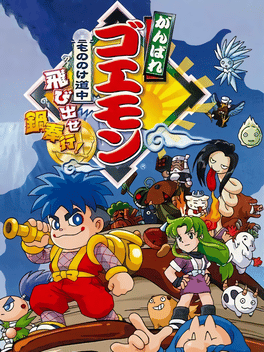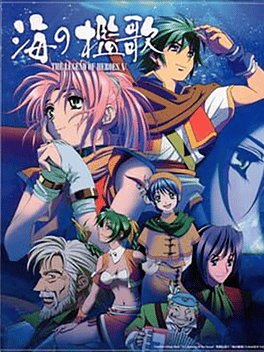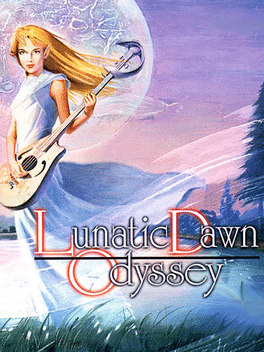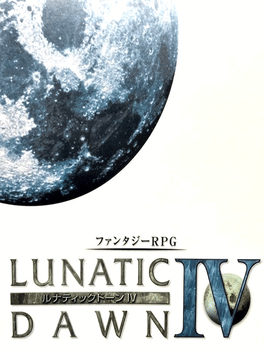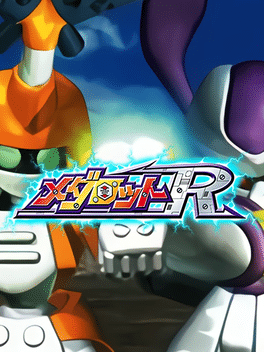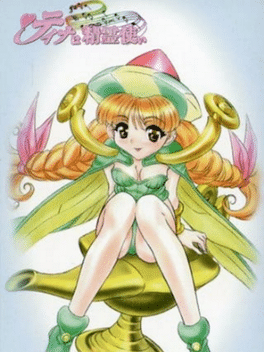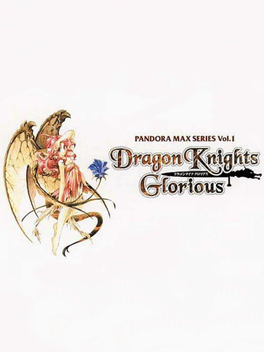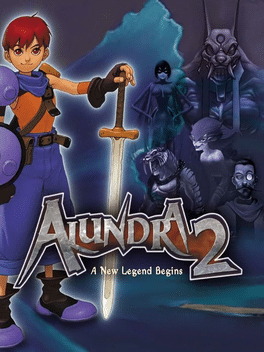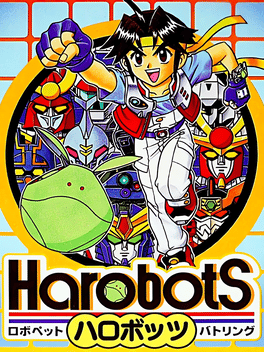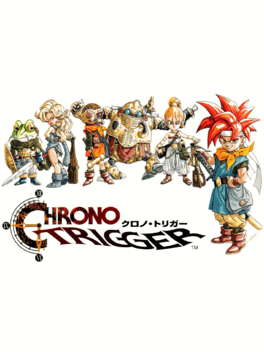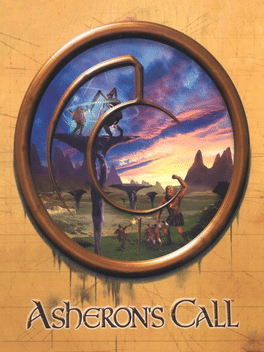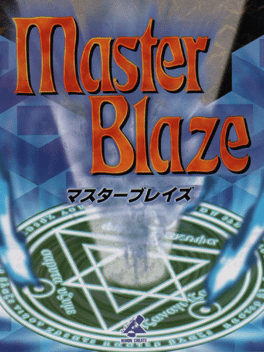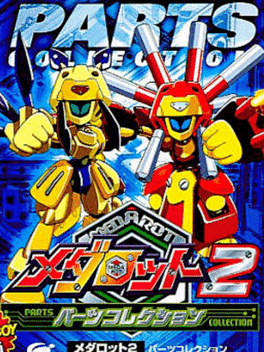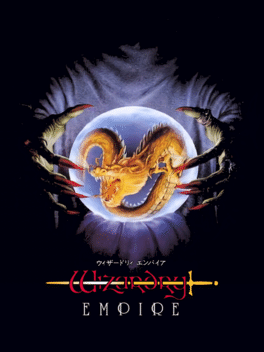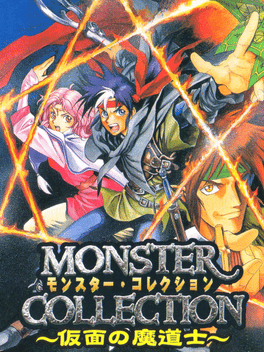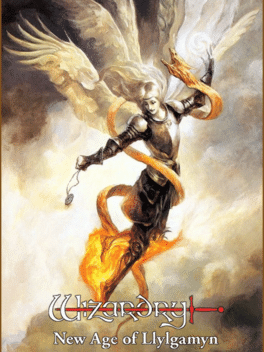New Xbox 360 Games - Page 235
-
Parasite Eve II
1999
Parasite Eve II
1999
star 7.9Parasite Eve II is an action role-playing survival horror video game released exclusively for the PlayStation. The game was developed by Square and published in Japan in 1999 and in both North America and, unlike the previous game, in PAL regions in 2000. It is the sequel to Parasite Eve and the second game in the series of the same name. Parasite Eve II is set several years after the events in the original game. The protagonist from the first game, Aya Brea, also features in this game as the playable character. She becomes involved with another outbreak of Mitochondrial creatures. Gameplay diverges from the previous game: battles take place in real time and the area of action is less restrictive. The approach is more typical of traditional survival horror games, although some role-playing elements are retained. -
The Legend of Heroes V: Umi no Oriuta
1999
The Legend of Heroes V: Umi no Oriuta (Cagesong of the Ocean) is the fifth installment in Falcom's long-running RPG franchise and the final entry in the "Gargarv Trilogy." The title was publish by Falcom initially for the PC on December 9, 1999 and was later remade for the PlayStation Portable by MiCROViSion in 2006. -
Lunatic Dawn Odyssey
1999
Lunatic Dawn Odyssey
1999
Lunatic Dawn Odyssey is a RPG in which the player controls a group of adventures that begina quest, they will go through different towns and other places. In their journeys they will face different kind of enemies and could talk to different characters and they can change their equipment in the shops. The game uses a first person perspective in the adventure part and a third person perspective in the battle part. The battle part is the classic turn based rpg style. The game features a high degree of freedom since the character can get married and have children and each time that the game is played the circunstances can changed so there are a lot of different endings. -
The Legend of Dragoon
1999
star 8.3A peaceful beginning. The legend was born 10,000 years ago. A violent uprising. A civilization of flying creatures enslave the human race. A bloody war. In a bid for freedom, the humans harness the spiritual forces of Dragons and triumph. Tranquility and harmony exist between all. But the past and the future are about to collide... Unveil a fantasy of magnificence, deception, magical combat and retribution. The journey that seeks the past ends. And the journey to discover today begins. Unleash the spirit of the Dragoons. And discover your destiny. -
Gobli's Adventure
1999
Gobli's Adventure
1999
An obscure game for the PS1, Gobli's Adventure stars Gobli who is a low level monster in an RPG. His life changes when the games programmer gives him the opportunity to travel to the upper world. -
Lunatic Dawn IV
1999
-
Medarot R
1999
Medarot R
1999
Medarot R is the Playstation One remake of the classic Gameboy game and is the very first Medarot game that was released in full-3D graphics for the Sony PlayStation console, featuring, for the very first time, works from Kenki Fujioka. It was developed by Imagineer and published by Natsume. The gameplay is about going around the town meeting different characters and winning the battles to upgrade your Medarot and advance through the game. -
Tina wa Seirei Tsukai
1999
Rahel is a professional swordsman. He takes a job to hunt bandits since it's well paid and takes a female companion with him. He has to cooperate with the female group of bandit hunters "Arabian Knights". -
Dragon Knights Glorious
1999
Pandora Max Series Vol. 1: Dragon Knights Glorious is a RPG developed and published by Pandora Box, which was released in Japan in 1999 -
Alundra 2: A New Legend Begins
1999
star 5.8You are Flint, a renegade swordsman on a quest to free a kingdom from the grip of a sinister ruler. Through a land of hidden danger you wield your weapon, navigating an intricate story wrought with bizarre characters, brain-twisting puzzles and wild games. Beware! An even greater evil is about to be revealed... -
Sylvanian Families: Otogi no Kuni no Pendant
1999
An ivory rabbit called Aster Dandelion ventures into the heart of the forest during a picnic and aids an injured fairy. She is left with a magical pendant that has a mysterious power that turns reality into dreams at the stroke of six in the evening. Now Aster has a quest to return the pendant to Fairyland while she tries to carry on with her daily life. In Sylvanian Families: Otogi no Kuni no Pendant the player navigates Aster around Sylvania Village, talking to her acquaintances, interacting with objects and completing various tasks, whether she’s at home, school or at a friend’s house. Various mini-games must be won to earn seeds for growing flowers as well as furniture to decorate Aster’s bedroom. There’s also optional side quests such as sprinkling vividust on wilted flowers. -
Harobots
1999
Harobots
1999
Harobots is a Role-Playing game, developed and published by Sunrise Interactive, which was released in Japan in 1999. -
Chrono Trigger
1999
Chrono Trigger
1999
star 9.8An enhanced port of Chrono Trigger that adds anime cutscenes and an exclusive Extras Mode. It is also known for having significantly longer load times in comparison to the original SNES version. Extras Mode is an option in the main menu that let players view cutscenes and artwork, listen to music, and view information about techs, enemies, bosses, endings, and item locations. It was first released for PlayStation in Japan before it came to North America as part of the Final Fantasy Chronicles compilation. -
Asheron's Call
1999
Asheron's Call
1999
star 8.4Asheron's Call (AC) is a fantasy MMORPG (massively multiplayer online role-playing game) for Microsoft Windows-based PCs developed and published by Turbine Entertainment. Though it was developed by the Turbine team (with Microsoft's extensive assistance), it was published as a Microsoft title until 2004. The game was set on the island continent of Dereth and several surrounding smaller islands and archipelagos on the fictional planet of Auberean. The game was played in a large, seamless 3D virtual world which could host thousands of players' characters at a time. Released on November 2, 1999, it was the third major MMORPG to be released and was developed at the same time as Ultima Online and Everquest. After initial success, its subscription numbers dropped as newer MMORPGs moved into the market. Its host servers remained online for over 17 years after the game's original launch. -
Master Blaze
1999
-
Wizardry Empire
1999
Wizardry Empire
1999
Wizardry Empire is a Role-Playing game, published by Starfish, which was released in Japan in 1999. -
Monster Collection: Kamen no Madoushi
1999
A Role-Playing game, developed by Kadokawa and published by ESP Software, which was released in Japan in 1999. -
Wizardry: New Age of Llylgamyn
1999
New Age of Llylgamyn is the second set of Wizardry remakes for the Playstation (Llylgamyn Saga was the first and encompassed the original trilogy). It consists of the classic and arrange versions of the notoriously hard Wizardry IV: The Return of Werdna as well as a remake of Wizardry V: Heart of Maelstrom. Sporting improved visuals, new orchestral soundtrack, auto-mapping, quick-saving and a nifty feature which allows the player to switch back to the wireframe graphics and 8-bit sprites, it is arguably the best way to enjoy these classic dungeon crawlers.
